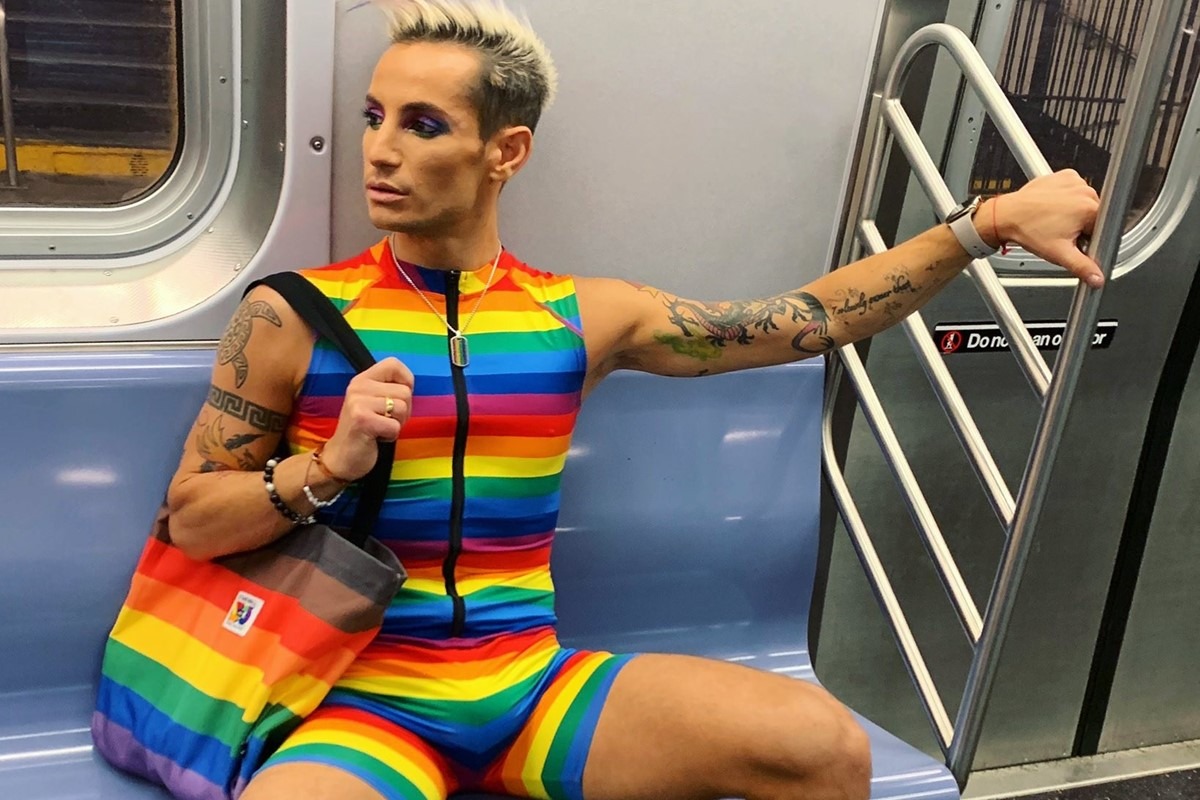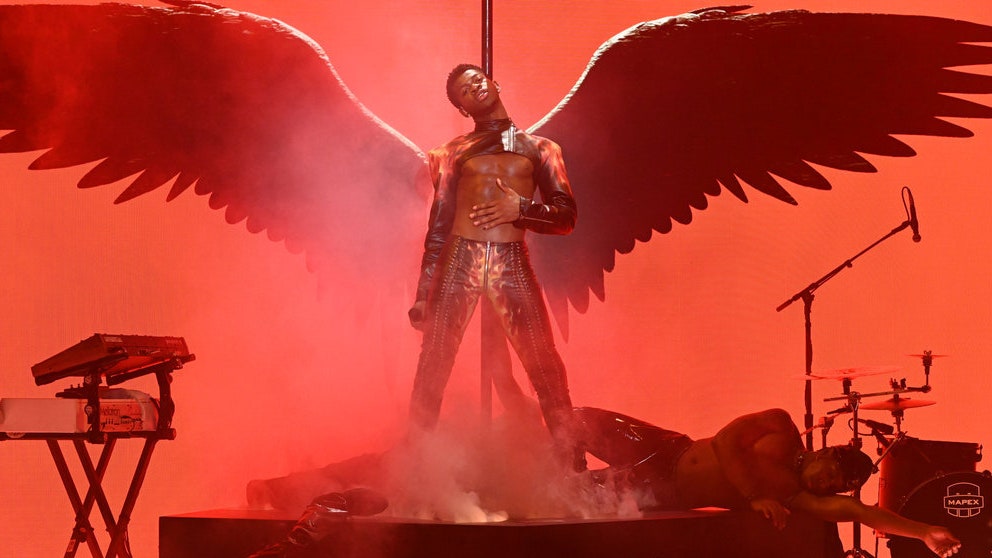
Why are Pride collections so heinous?
Maybe pinkwashing would be fine if the results weren’t so… ugly
At this point, to comment on the corporatisation of Pride is a fairly anodyne undertaking. Every June, internet thinkers will enrage themselves over successive examples of pinkwashing, with someone guffing about how neoliberalism killed the radical roots of gay liberation, and another about how queer culture has been commodified under Primark and late-capitalism. Yet the aesthetic crimes that accompany all the honking Pride floats and retina-burning merch are just as, if not more, heinous. The rainbow fanny packs, the LGBT sandwiches, and the concept of Pride A Manger. This suit, the Home Office’s technicolour rebranding, and all those IKEA sofas that look as though the cast of Monsters, Inc. intercoursed the contents of a DFS warehouse.
From early May, my own inbox began to read like the treatment for a Nationwide advert. Subject lines were laden with words like “identity” and “they/them” only for me to realise that I was actually being asked to purchase a tin of CBD-infused gummies, or worse, a plug-in air freshener. Perhaps the most ghoulish of these instances, though, was when Target released a t-shirt bearing the pink triangle associated with ACT UP, the grassroots organisation that helped to end the Aids epidemic. Not only did the department store appropriate the symbol without permission or payment, but it sat alongside dog tutus, ”adventure” sandals, a t-shirt printed with a Schitt’s Creek quote, this thing that my brain is refusing to provide words for – each one uglier and more rainbowfied than the last.




It’s almost as if Target’s poor decision-making had somehow spread onto the collection itself, seeping across items like sewage catching the light, refracting red, yellow, pink, and green gradients. Thankfully though, as is tradition, shops are gutted of the gay stuff and any incriminating social posts get archived as soon as the clock strikes 00:00 on July 1. But the legacy of these brands’ aesthetic choices lives on, shaping the mainstream’s understanding of queer taste. “It’s such a shame,” an academic at a leading fashion school, who would rather stay anonymous, says “because the history of how the Pride flag came to exist is really moving. Thirty people worked on Gilbert Baker’s original pieces, which were hand-dyed, forged from scraps of drag costumes, and each colour carried its own symbolism, so there’s this beautiful crafting that gets lost in the most offensive of mass-produced items.”
Ugly as sin pic.twitter.com/y60HwcXGBw
— Chris Stedman (@ChrisDStedman) May 27, 2021
“What you’re left with isn’t terribly chic or innovative,” adds Jay McCauley Bowstead, author of Menswear Revolution, “but the so-called ‘creative industries’ don’t allow much time or space for creativity. A put-upon design assistant who’s been given a couple of days to come up with half a dozen Pride-themed products [that can be manufactured quickly and cheaply using the company’s existing supply chain] is unlikely to produce the most innovative of designs.” And then there’s the conversation surrounding donations, which seldom take place without someone making a purchase first. So while this entire piece is obviously just an aesthetic judgement linked to my own tastes and sensibilities, there is an evident lack of care put into the vast majority of Pride collections, manifesting in glitter jockstraps, rainbow umbrellas, and plastic shutter shades. All of which are at odds with what real life queer people actually want to wear – trousers.
The “brands marketing to gays versus me and my gay friends” meme is well-established on social media, with people splicing a photograph of, say, Ross Matthews in a sequined mankini next to a picture of Grandpa Joe from Charlie and the Chocolate Factory in his soiled and crunchy nightshirt. Yet it stands to reason: if not even gay people want to dress like they taste the rainbow, then who, exactly, are these collections aimed at? “I don’t think these things are for queer people. They’re for straight audiences who would consider themselves to be allies in some way,” the academic says. “It’s a way to convince cis-het allies to be a part of Pride without actually taking real action to support the people they love, who are the producers of the culture they want to consume. I think this comes into the revulsion we might feel when confronted by all the merch.”
Brands marketing Me & my gay
to gays: friends: pic.twitter.com/PXf4LM0FTH— Syd ♈️✨ (@sydneyy_c18) May 23, 2022
It’s easy to produce a “love is love” print or a print a flag onto some generic garment, and as a group of sentient consumers, queer people understand that they are being marketed to in a direct and often thoughtless way. “It’s just obvious isn’t it? It’s almost insulting to our intelligence that brands don’t have more complex things to say about queer culture, when they could really dig deep and introduce meaningful aspects to an audience that could really benefit from broadening their horizons,” the academic adds. McCauley Bowstead agrees, noting that “in order to design products and garments that speak authentically to queer people, you need to undertake research, have a knowledge of queer histories, and carry out a proper design process. Brands could create clothing that referenced the many symbols used by people historically – and in some cases to this day – to signal same-sex attraction or queer identity, such as ties on women, handkerchiefs, or green carnations.”
However, much of this conversation is limited to queer people in the West, who can afford to be snooty in how they adress their sexuality or gender. “Being queer is still an important identity marker to me,” Shaf Shajahan, the founder of Malaysian theatre company Liver & Lung, says. “As a queer kid who grew up in a Muslim country, seeing the rainbow flag championed in any capacity – no matter how tacky – always sparks joy. For every privileged white gay that complains about Primark’s ‘disgusting pride sock collection’, there is a PoC queer person in the world who would do anything to have a pair, or worse, be persecuted for wearing one.” Admitting that his day-to-day wardrobe is just as flamboyant, there’s something quite pure in Shajahan’s expression, and as someone who was socialised outside of liberal norms, to wear a piece from a Pride collection still feels like a radical act. “Gay symbols helped and continue to help us self-identify in times and places where we can’t do so explicitly. The Progress Pride flag and other queer iconography need to be celebrated.”
The Ikea pride collection is so insanely cool??? pic.twitter.com/yNfbcvrfjx
— Fire Force enjoyer (@mayamona_) June 28, 2021
Though Twitter would suggest otherwise, Justin Bengry, a leading historian on sexuality, has found that gay men were first identified as a consumer group in the late 19th century, starting with items of fashion, grooming, and media relating to the consumption of those goods. In bucking contemporary scholarship, which connects the arrival of the pink pound with gay liberation in the early 1970s, he’s proved this whole phenomenon is as old as consumer culture itself. “Capitalism wants to sell stuff and that desire is more important than who the target market is. Whether that’s ethnicity, sexuality, or gender, that drive for profit is fused into mainstream culture,” the academic elaborates. This is why we see such basic or lowest-common denominator stuff, which brands hawk alongside facile taglines gesturing to representation. “It’s never especially useful or helpful to those that they claim to be representing most, though. So people end up consuming their way into Pride because they’re told that it will somehow make them ‘visible’.”
Over recent years, visibility and representation have proved a limiting metric for progress, just as identity politics have become increasingly fatuous and divisive. Today, there is nothing inherently noble about being a queer person – just look at Che Diaz – and so the nausea that arises when setting eyes on a technicolour whistle or an “I can’t even think straight” t-shirt is not so much offensive as it is corny. In the context of white, cis-gendered gay men (who, in my experience, are the most likely to commit themselves to gruesome fashions) the idea of doing your politics on your body tends to be fairly superficial and temporary. This rarely leads to any political revolution, which is perhaps more important now than it has been in a long time. The UK is a rancid conservative isle that’s rampant with transphobia and many of our rights are still so tenuous, and US, children are being forced to detransition, schools are prohibited from saying the word “gay”, and the overturning of Roe v Wade threatens a rolling-back of hard-won queer rights. Meanwhile, in other parts of the world, the situation is even more dire, with people facing persecution, violence, and imprisonment simply for being queer.
Gay fashion has always been about expressing oppositional tastes, so perhaps all this gaudy merch is more connected to that sense of playfulness and agression than we might initially assume. Of course, not all queer people are going to think – or care – about any of this, and there’s something to be said for just showing up at Pride, being sick in Soho Square, and not over-intellectualising what the crowd are wearing. But just as the call for ethical consumption begins to sound, so should the desire to look good while doing so. Forgetting the David Wojnarowicz tribute, JW Anderson, Diesel, Balenciaga, and Christopher Bailey’s swansong at Burberry have all provided blueprints for nuanced, queer-coded offerings, as have countless smaller queer-led brands. So much of enjoying fashion is predicated on the compromises we have to make with consumerism – but queer people can, and should, ask for more.



